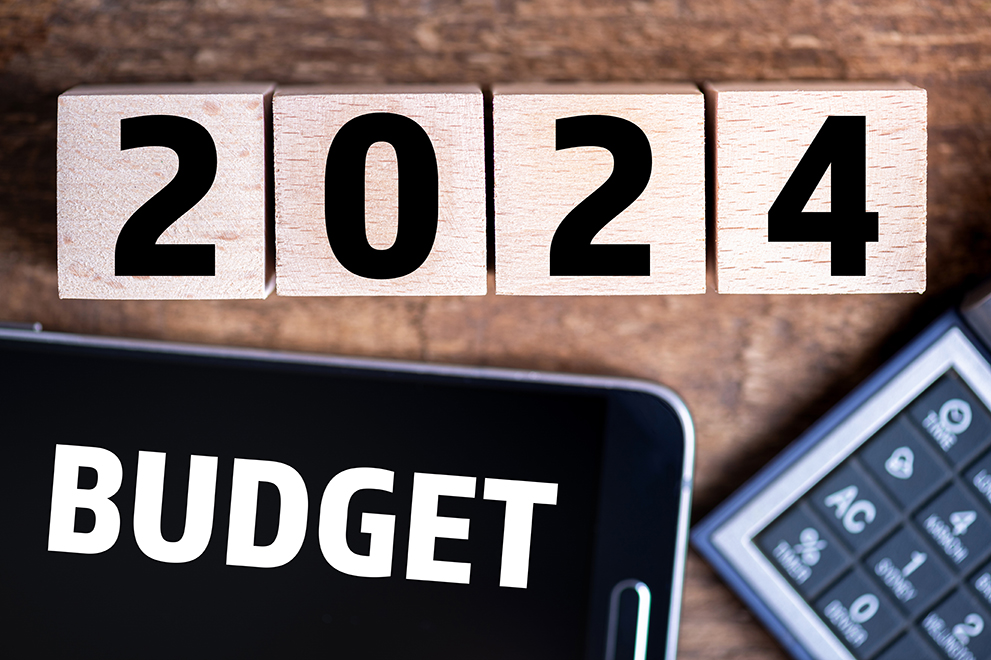 Creating a budget is easy. Sticking to it is hard. Luckily, following savvy budgeting and saving tips can help. According to recent surveys, 74% of Americans have a monthly budget, but 84% of those with a budget fail to stick to it.1 If this sounds familiar, these budgeting and saving tips can help you create a more realistic budget you can feel motivated to stick to.
Creating a budget is easy. Sticking to it is hard. Luckily, following savvy budgeting and saving tips can help. According to recent surveys, 74% of Americans have a monthly budget, but 84% of those with a budget fail to stick to it.1 If this sounds familiar, these budgeting and saving tips can help you create a more realistic budget you can feel motivated to stick to.
- Find Your “Why”
Budgeting is a means to an end. If you want to stick to your budget, you need to keep that end in sight. Before you start, ask yourself why you want to save money. The reason for creating a budget is often more important than how well you stick to it.
How to Find Your “Why”
Start by asking yourself a simple question: “What’s most important to me?” For some, a clear monthly budget can provide the means to save for a house or a summer vacation. For others, budgeting is the key to escaping a mountain of credit card or student loan debt.
How to Stay Motivated
If you want to stay motivated, take your “why” and make it visual. Find a picture of your dream house or perfect vacation spot and place it where you’ll see it every day — like your office or refrigerator. That reminder will help you keep your goals in sight (literally) and avoid the temptation to exceed your monthly budget or make an impulse purchase.
- Create SMART Savings Goals
Budgeting and saving tips won’t be very meaningful if they’re not realistic. That’s why it’s important to create SMART savings goals. SMART is an acronym that stands for:
- Specific
- Measurable
- Attainable
- Realistic
- Time-bound
For instance, saving for a new car is a specific, measurable goal. You can make it even “SMARTer” by attaching a deadline — say, saving $6,000 for a down payment within 18 months. The more specific and measurable you can be with your financial goals, the easier it will be to track your progress and fit these goals into your monthly budget.
Create Long-Term Savings Goals
Another of the most helpful budgeting and saving tips is to divide your savings into short- and long-term goals. Long-term goals can include:
- Retirement
- A dream vacation
- Paying off long-term debt
- Launching your own business
- A down payment on a new home
Even though some of these goals may be years away, you can still make them SMART. For instance, set a tentative date for your retirement. That way, you’ll be able to monitor your retirement savings and ensure you can achieve your dream retirement lifestyle.
Create Short-Term Savings Goals
Not all of your savings goals will be long-term. Short-term goals can be even more motivating since they’re more immediate and tangible. Common short-term goals include:
- A summer vacation
- A down payment on a car
- Escaping credit card debt
- An emergency fund
- A wedding or honeymoon
You can make these goals SMART by ensuring they’re realistic and attainable, given your monthly income. For instance, if a summer vacation seems too lofty, try saving for a weekend getaway or even your next date night. The point is that by creating SMART goals, you’ll have more motivation to stay on budget.
- Keep Track of Your Spending
Every budget must account for monthly income and monthly expenses. One of the most important budgeting and saving tips is to keep track of every dollar you spend.
Keeping Track Digitally
It should come as no surprise – there’s an app for that! You might consider downloading an app such as You Need a Budget (YNAB) to help you stick to your chosen budgeting and saving tips. If you already have a household budget, it’s vital to compare the expenses you plan for in a given month with what you’re actually spending.
The Envelope System
This method is exactly what it sounds like. Each month, pay your regular bills (rent, mortgage, utilities, etc.) and put aside some money for savings. Then, take the rest out in cash. You can then stuff this cash into a series of envelopes, each representing a category like:
- Groceries
- Dining out
- Entertainment
- Gifts
- Clothes
By paying for these items in cash, you’ll limit the amount you’re able to spend each month. You can choose to roll over any leftover money into the next month or move it into another category.
- Find Ways to Reduce Your Variable Expenses
One of the reasons you may have struggled with budgeting and saving tips in the past is that no two months come with the same costs. Sure, things like rent or insurance premiums may remain constant, but the cost of groceries can vary, especially in an era of increased inflation.
Your first step should be to separate your fixed and variable expenses. Then, you can find strategies for reducing the amount you spend on variable expenses.
Fixed vs. Variable Expenses
Fixed expenses refer to costs that remain the same from month to month. Common fixed expenses include:
- Monthly rent or mortgage
- Insurance premiums
- Student loan repayments
- Internet or cable bills
- Childcare costs
- Property taxes
- Phone bills
Utility bills are often considered a fixed cost since they’re generally the same each month.
Variable expenses are those that change from month to month. Common examples of variable costs include:
- Groceries
- Meals out
- Gifts
- Entertainment
- Clothing
Your variable expenses, therefore, include your meals as well as your discretionary spending. If you want to improve your monthly saving habits, start with your variable expenses.
Budgeting and Saving Tips to Reduce Variable Expenses
How can you use budgeting and saving tips to cut down on your variable expenses? Here are some ideas for trimming your budget:
- Buy store-brand groceries to save money
- Use coupons to reduce your grocery bill
- Bring meals and coffee from home to avoid drive-thrus on the way to work
- Rotate your streaming platforms to avoid high monthly bills
- Only upgrade your phone if absolutely necessary
- Challenge yourself to two fewer takeout meals or coffees each week
If this doesn’t sound exciting, try to make a game of it. During your first week, challenge yourself to buy one less gourmet coffee on the way to work. Then, the next week, challenge yourself to cut out something else. You may be surprised at just how quickly these small expenses can add up, which also means that cutting back on expenses can lead to major savings.
- Create (and Maintain) a Monthly Budget
Of all the budgeting and saving tips you’ll hear, this is the most important. If you haven’t already, create a realistic monthly budget for you and your family. Now that you’ve identified your fixed and variable expenses, it will be easier to create a workable financial plan each month. Here are some specific strategies you can use to create a monthly budget.
The 50/30/20 Rule
One of the most common budgeting and saving tips is to use the 50/30/20 rule. In this method, you’ll break up your budget as follows:
- 50% of your monthly income goes to needs (mortgage, rent, groceries, etc.)
- 30% of your monthly income goes to wants (entertainment, hobbies, etc.)
- 20% of your monthly income goes to savings and investments
You may need to adjust these percentages based on your goals and current financial situation. For instance, if you’re trying to eliminate debt, you might contribute a bit more to your monthly payments and less to your savings, at least for the time being.
The Zero-Based Budget
The zero-based budget means that each month, your income minus your expenses always equals zero. This means that you’ll break your budget into various categories and assign a specific dollar amount to each category. In essence, every dollar has a job. This can be a helpful approach if you’re detail-oriented, and the benefit is that it keeps you within budget on every household expense.
Create an Emergency Fund
According to a recent report, over 20% of Americans have no short-term savings. If you’re one of them, make it a priority to save enough money to cover three to six months’ worth of expenses. Having an emergency fund will prevent you from dipping into your other savings if you have an unexpected expense or career setback, and it will also keep you from reaching for your credit card.
Budgeting and Saving Tips You Can Count On
The above budgeting and saving tips will help you manage your money better, and they can also help you achieve your financial goals. By sticking to a budget, you and your family can build your savings and avoid the high cost of credit card debt. The end result will be a balanced budget — as well as a balanced lifestyle and peace of mind.
If you have any questions or would like guidance, give us a call at (603) 261-3736.
Sources:

 Bob has a passion for making your money work hard for you. He takes profound joy in ironing out a plan for a long and comfortable retirement, no matter what your current income or level of wealth. With a work ethic second to none, he has a zeal for transforming uncertainty into stable ways for you to protect your future and your family. He knows that the quality of your life you enjoy today can remain as rewarding—or even better—after retirement.
Bob has a passion for making your money work hard for you. He takes profound joy in ironing out a plan for a long and comfortable retirement, no matter what your current income or level of wealth. With a work ethic second to none, he has a zeal for transforming uncertainty into stable ways for you to protect your future and your family. He knows that the quality of your life you enjoy today can remain as rewarding—or even better—after retirement. With a strong background in information technology, Carol is instrumental in building operational policies and strategies that keep the organization functioning smoothly. Carol’s organizational skills and her flexibility to jump from priority to priority along with her commitment to customer service makes her an essential part of the Grimard Financial team. When Carol is not working with the Grimard Financial Family, she is a very creative and accomplished photographer.
With a strong background in information technology, Carol is instrumental in building operational policies and strategies that keep the organization functioning smoothly. Carol’s organizational skills and her flexibility to jump from priority to priority along with her commitment to customer service makes her an essential part of the Grimard Financial team. When Carol is not working with the Grimard Financial Family, she is a very creative and accomplished photographer.